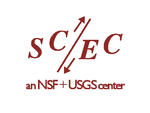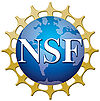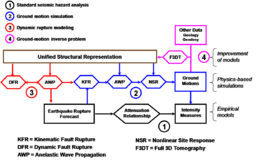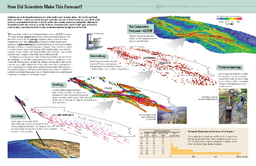Difference between revisions of "Main Page"
| Line 1: | Line 1: | ||
| − | [[Image:SCEC_NSF-USGS-words_logom.png|right | + | [[Image:SCEC_NSF-USGS-words_logom.png|right|150px]] |
| − | [[Image:nsf1.jpg|right | + | [[Image:nsf1.jpg|right|100px]] |
== SCECpedia - Wikipedia for SCEC == | == SCECpedia - Wikipedia for SCEC == | ||
Revision as of 22:45, 2 October 2010
Contents
SCECpedia - Wikipedia for SCEC
This is SCEC's Collaborative wiki site (SCECpedia). SCECpedia is a SCEC community wiki configured to support our distributed research where SCEC researchers can find and contribute information about SCEC research projects and results. SCECpedia provides a collection point for information and links to external information about SCEC research projects. SCECpedia content is created by the SCEC community and the expectation is that topics with broad community interest will draw greater contributions and more complete information. SCECpedia provides a collection point for information about SCEC research projects as SCEC researchers enter information about their projects and provide links to sources of information.
Additional information about SCEC earthquake system science research is available on related SCEC web sites including:
Recent Entries (last updated 29 September 2010)
Overviews and Summaries
- PetaSHA3 Project
- CME Project
- SCEC People
- SCEC Special Projects
- SCEC Organizations
- CME Scientific Software Projects
Types of SCEC/CME Web Sites
The SCEC/CME collaboratory provides three levels of access to web-based project information. The levels differ on who can read and edit information on the web site. Default Read access is public to facilitate collaboration. Project private web pages are provided if needed.
- Public SCEC Project Pages
- (Read Access: Public - Write Access: SCEC Communications Education and Outreach)
- SCECpedia Collaborative Wiki
- (Read Access: Public - Write Access: SCEC)
- SCEC Private Wiki
- (Read Access: SCEC - Write Access: SCEC)
SCECpedia - Adding and Editing
CME Research Support
Southern California Earthquake Center (SCEC) (www.scec.org) and SCEC/CME research is funded by NSF Cooperative Agreements EAR-0106924 and USGS Cooperative Agreement 02HQAG0008, and NSF awards EAR- 074493, EAR-0949443, OCI-0832698, and OCI-0832698. This research is supported by an allocation of advanced computing resources provided by the National Science Foundation (NSF). Computations are performed on Kraken (a Cray XT5) at the National Institute for Computational Sciences (www.nics.tennessee.edu). Computations and data management are performed at San Diego Supercomputer Center (www.sdsc.edu), where the iRODS Data System is used (www.diceresearch.org). The Texas Advanced Computing Center (TACC) at The University of Texas at Austin (www.tacc.utexas.edu), the National Center for Supercomputer Applications (NCSA) (www.ncsa.illinois.edu) and the Pittsburg Supercomputer Center (PSC) (www.psc.edu) provides HPC resources. Computations are supported by the University of Southern California Center for High-Performance Computing and Communications (www.usc.edu/hpcc). Our research uses HPC resources provided by the U.S. Department of Energy (DOE) through an Innovative and Novel Computational Impact on Theory and Experiment (INCITE) program allocation award. Computations were performed on Jaguar, which is part of the Oak Ridge Leadership Facility at the Oak Ridge National Laboratory which is supported by under DOE Contract No. DE-AC05-00OR22725. This research uses resources of the Argonne Leadership Computing Facility at Argonne National Laboratory, which is supported by the Office of Science of the U.S. Department of Energy under contract DE-AC02- 06CH11357. The Ohio State University One-sided MPI Communication research was supported through NSF HECURA-1 (CCF- 0833169/139/155). This research received technical and user support through the Advanced Support for TeraGrid Applications (ASTA) program (www.teragrid.org).



